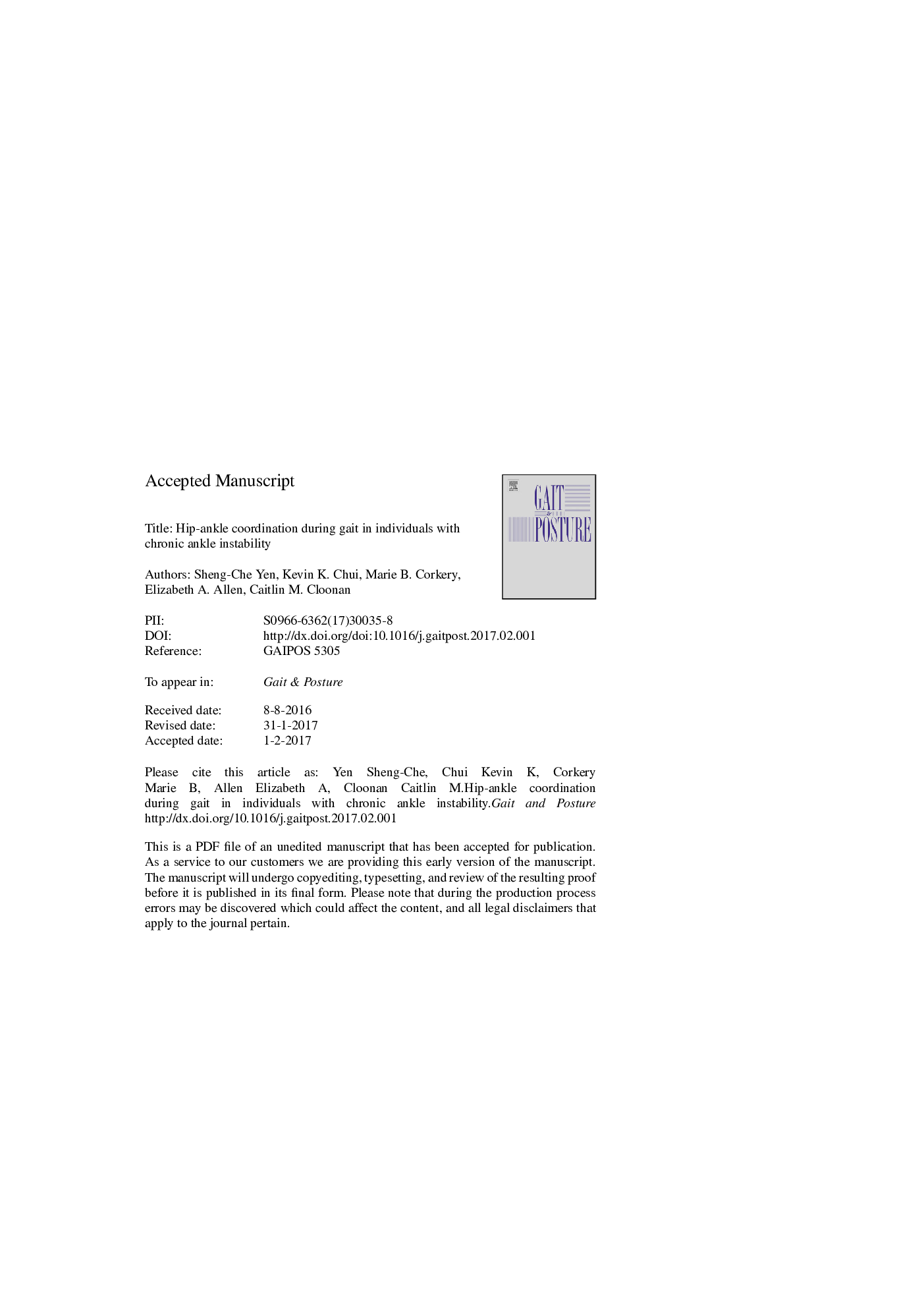| Article ID | Journal | Published Year | Pages | File Type |
|---|---|---|---|---|
| 5707772 | Gait & Posture | 2017 | 24 Pages |
Abstract
Individuals with chronic ankle instability (CAI) may have sensorimotor impairments that affect control at the hip in addition to the ankle. The purpose of this study was to compare hip-ankle coordination and coordination variability between individuals with CAI and healthy individuals during walking. Ten healthy subjects and 10 subjects with CAI were recruited to walk on a treadmill. Hip-ankle coordination was quantified using vector coding, and coordination variability was quantified using coefficient of correspondence. We found significant between-group differences in hip-ankle coordination in the frontal plane around loading response (Control: 165.9 ± 18.4°; CAI: 127.6 ± 48.6°, p = 0.04) and in the sagittal plane around the first half of mid stance (Control: 307.2 ± 9.8°; CAI: 291.8 ± 11.4°, p < 0.01), terminal stance (Control: 301.1 ± 13°; CAI: 313.4 ± 10.9°, p = 0.04), and pre-swing (Control: 243.9 ± 35.2°; CAI: 329.9 ± 57.8°, p < 0.01). We also found significant between-group differences in hip-ankle coordination variability in the frontal plane around the second half of mid stance (Control: 0.54 ± 0.06; CAI: 0.45 ± 0.07, P < 0.01). CAI is associated with alteration of hip-ankle coordination and coordination variability in stance phase during walking. Gait training is important in CAI rehabilitation, and the training should address altered hip-ankle coordination to reduce the risk of recurrent injuries.
Related Topics
Health Sciences
Medicine and Dentistry
Orthopedics, Sports Medicine and Rehabilitation
Authors
Sheng-Che Yen, Kevin K. Chui, Marie B. Corkery, Elizabeth A. Allen, Caitlin M. Cloonan,
